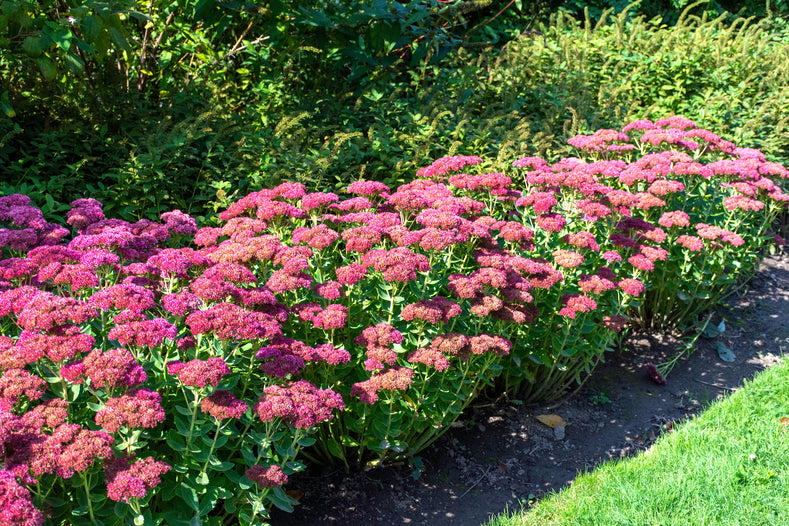Sedum, commonly known as Stonecrop, is a versatile and hardy genus of succulent plants often used in gardens across the USA for its drought-tolerant and low-maintenance qualities. Here's a detailed description:
Appearance: Sedum plants come in a variety of shapes, sizes, and colors. They typically have thick, fleshy leaves that store water, an adaptation to their dry, rocky native habitats. The leaves can be green, blue, red, or purple, often changing color throughout the seasons. Sedum plants range from low-growing, ground-cover types to taller, upright varieties.
Flowers: Sedum produces clusters of small, star-shaped flowers. These blossoms can be white, yellow, pink, or red, adding a vibrant splash of color to gardens from late summer through fall. The flowers are known for attracting pollinators like bees and butterflies.
Growth Habit: Depending on the variety, Sedum can be a low-growing plant that spreads along the ground, forming a dense mat, or it can be an upright plant reaching several feet in height. The low-growing types are often used as ground covers, while the taller varieties can add height and structure to garden beds.
Hardiness: Sedums are known for their exceptional hardiness. Most varieties are resistant to drought, heat, and poor soil conditions. They thrive in USDA hardiness zones 3 through 9, making them suitable for a wide range of climates across the USA.
Uses in Landscaping: Due to their low maintenance and attractive appearance, Sedums are commonly used in rock gardens, borders, and as part of xeriscaping designs. They are also popular in container gardens and green roofs due to their shallow root systems and tolerance of poor soil conditions.
Soil and Sun Requirements: Sedums prefer well-drained soil and do best in full sun, though they can tolerate partial shade. They are an excellent choice for areas where other plants might struggle, such as slopes, rocky terrain, and urban environments.
Care and Maintenance: Sedum plants require minimal care. They need occasional watering (especially during prolonged dry spells), and they benefit from being divided every few years to maintain vigor and prevent overcrowding.
Overall, Sedum (Stonecrop) is a resilient and beautiful plant choice for gardeners looking for a low-maintenance option that provides year-round interest and color.



